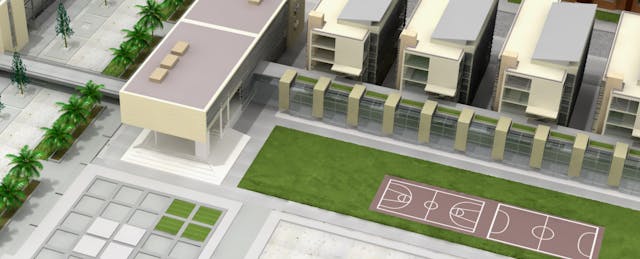The act of talking with others—having social debates and conversations—is key to human learning, and this “social learning” has now become an important tenet of teaching and learning.
Yet we tend to overlook how ingrained social learning is in our institutions, especially in higher education—how purposefully college campuses are designed to maximize the accidental run-ins and organic engagements. Campus quads, merged pathways, dormitories, libraries, cafeterias and learning spaces all bring students together to foster, as Chun-Mei Zhao observed, a “community focused on academic content, which allows [students] to further develop their identity and discover their voice as well as to integrate what they are learning into their worldview and other academic and social experiences.”
This is particularly important today as more students are studying and learning online, and are increasingly disconnected from the physical spaces designed to spark social learning and interaction. As this trend continues, universities risk losing the community of informal, social learning that they were designed to foster. And that would deprive their students of a fundamental and important mode of learning and growth.
Rather than ignore this challenge, or chalk it up to the inevitability of the digital world, universities can and should create digital equivalents and environments to replicate—or even enhance—the authentic student interactions they are likely encounter on campuses. In the absence of such digital equivalents, students may find or create social spaces online anyway, with the potential to bring out poor behavior and becoming disconnected from the formal social constructs of academic life.
When we overlook the need for social learning spaces online, we sacrifice much more than the lost learning opportunities on-campus students take for granted. We also miss the opportunity to use the power of technology to create social learning at scale. In other words, if we can scale formal learning by taking it online, we can scale social learning there as well.
It is possible that some faculty and administrators think that we are doing that already, perhaps counting on a foundation of the learning management system, or LMS, that most colleges use as their virtual communication hub and online classroom. While the LMS has been a long-standing staple for delivering syllabi, readings, assignments and discussion forums, it does not necessarily foster social learning. Most spaces within LMSs are designed for activities within specific courses, and for the duration of a particular course. They are transient spaces where students access learning materials for the duration of a course. If universities want to develop informal, peer-to-peer engagement and learning spaces, they are most likely going to have to build them, with the same purpose and intent given to campus design centuries ago.
Moreover, creating digital spaces for student interactions in and outside of classes can have multiple additional benefits. By providing a platform where students are not siloed into their registered courses, learning analytics could provide vastly different insights and information to help inform curriculum enhancements, as well as academic and administrative communications and decisions. Online social spaces with school-driven intentionality would also allow schools to intervene earlier and more directly across the array of academic and personal student challenges.
As online students, and increasing numbers of their on-campus counterparts, are engaging more frequently and more authentically online, universities need to meet them there with spaces and tools for both formal and social learning.


